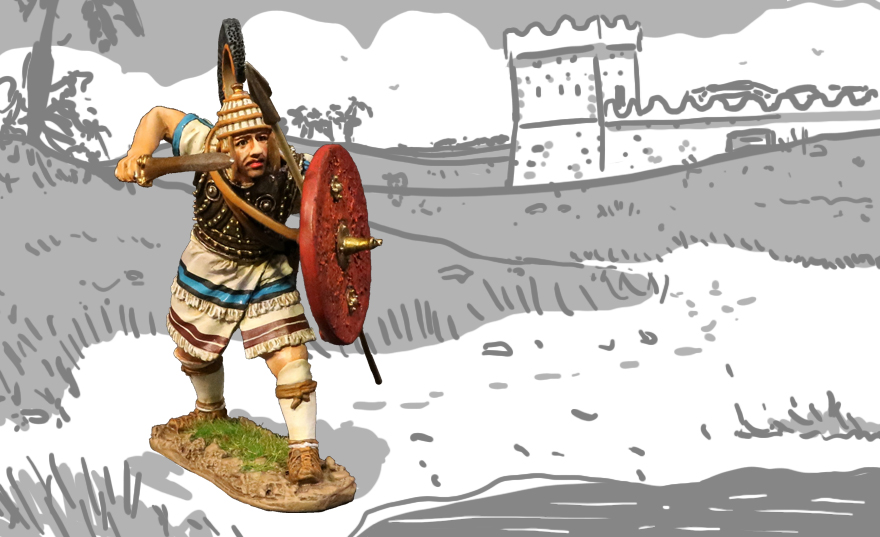The Trojan War with John Jenkins
The beginning of a new collection is always something exciting. However, it can be hard to decide whether or not to collect those new figures when you only have 2-3 pieces produced so far. It takes a bit of time to understand where a collection is going and when you finally have a good grasp of the situation, the earlier pieces are gone and you regret not getting them when you had the chance. So, to inaugurate the new Trojan War collection by John Jenkins, let’s ask him a few questions and look at the JJ-TWG-05 - Odysseus.
The Trojan War with John Jenkins
TSC- The planning of the Trojan War by Zeus makes it a mythological conflict, but many think it was based on real events. How did you approach that for your collection and when do you locate it on the real timeline?
JJ- There is so much written about the Trojan war and when it was supposedly to have occurred. History can be defined as starting from when the written word began. Anything before is archaeology and is the study of fossils and objects.
What is believed to be the Trojan war took place around 1200BC, what we now call the Bronze Age. The story of the Trojan War comes to us from Homer’s Iliad, which was believed to be written about 500+ years later. The story of the Trojan War would have been passed down from generation to generation, by oral tradition.
Anyone who collects my work, understands I am basically a storyteller at heart and not a historian. Although we strive for historical accuracy in what we create, we must always remember that to the storyteller, this is just “grammar”.
I attended a talk on Rorke's Drift by the National Geographic society many years ago, and what grabbed my attention, was that the presenter described the battle as if it was an epic poem. His talk started off with, “ These ordinary extraordinary men, made this ordinary extraordinary decision….” The Iliad is an epic poem, and perhaps the first great piece of storytelling.
I have based my approach on depicting this series on the work of the modern illustrator, historian, and storyteller, Peter Connolly.
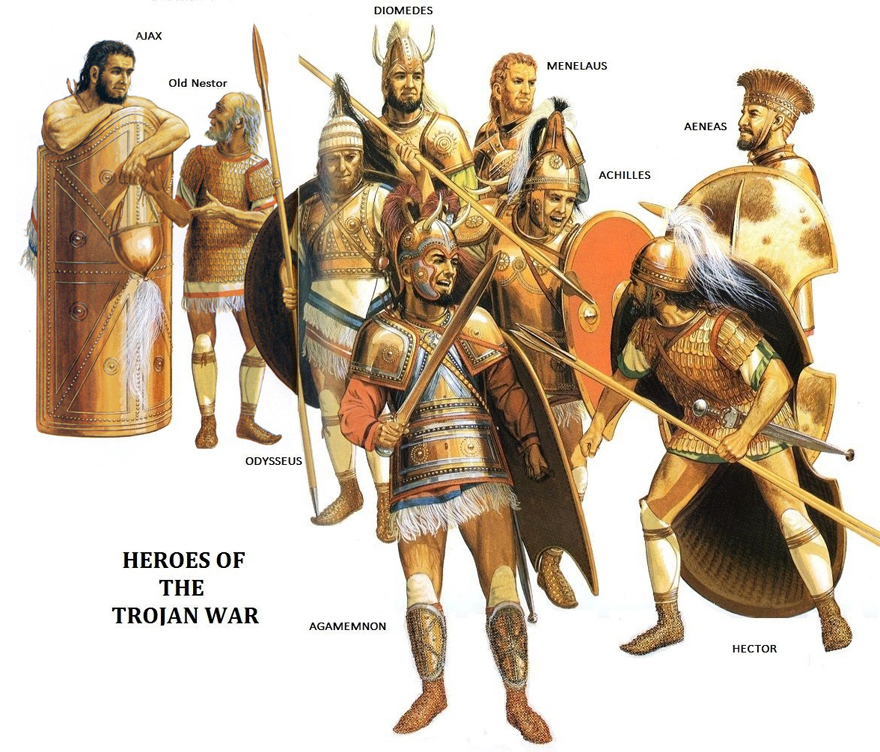
The various heroes of the Trojan War by Peter Connolly.
Illustration from his book “The Ancient Greece of Odysseus”
TSC- How this collection can be combined with your other pieces. Can we mix it with the Armies And Enemies Of Ancient Greece And Macedonia?
JJ- Other series that have been produced, such as the Thracians are based around 400BC and are placed in what is believed to be the Iron Age, so are much later than when we believe the Trojan War took place.
TSC- Odysseus is a hero, but he is also a warrior surrounded by his troops. How do you approach a figure such as Odysseus when designing them and how do you manage to make them stand out from the rest of the group while being a part of it?
JJ- I thought a great deal about how to depict the heroes in this story. At one point since the main characters all seem larger than life, I considered making them a slightly larger scale, such as 1/28 (65mm) instead of 1/30(58MM). Also I considered different painting styles.
But in the end, most of the main characters would have been kings or princes, and would be heavily armoured, whilst most of the main troops would have no or little armour.
There are several descriptions of character’s armour in the Iliad, and I’ve tried to reference these as much as possible.
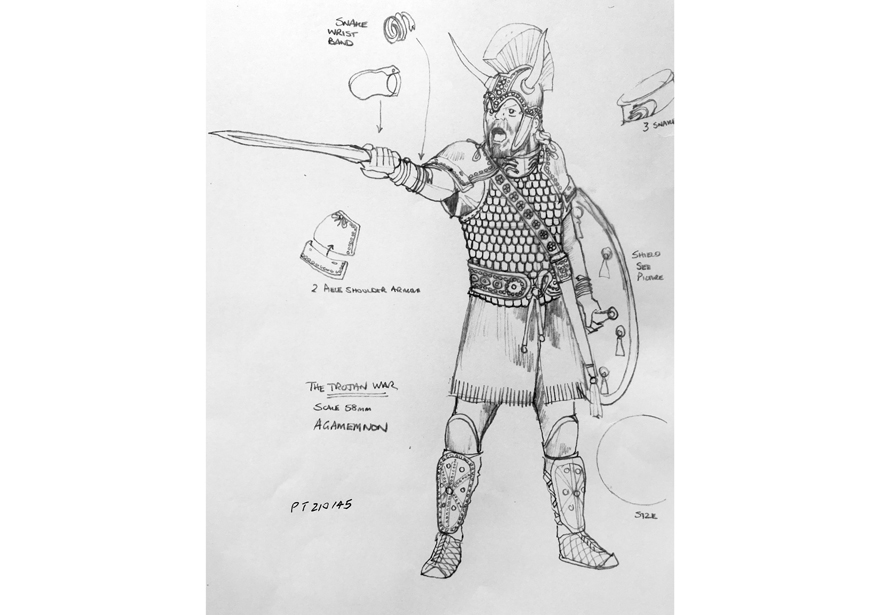
Sketch by John Jenkins of Agamemnon in fancy armor.
Whilst the Greek troops are depicted with less armour.
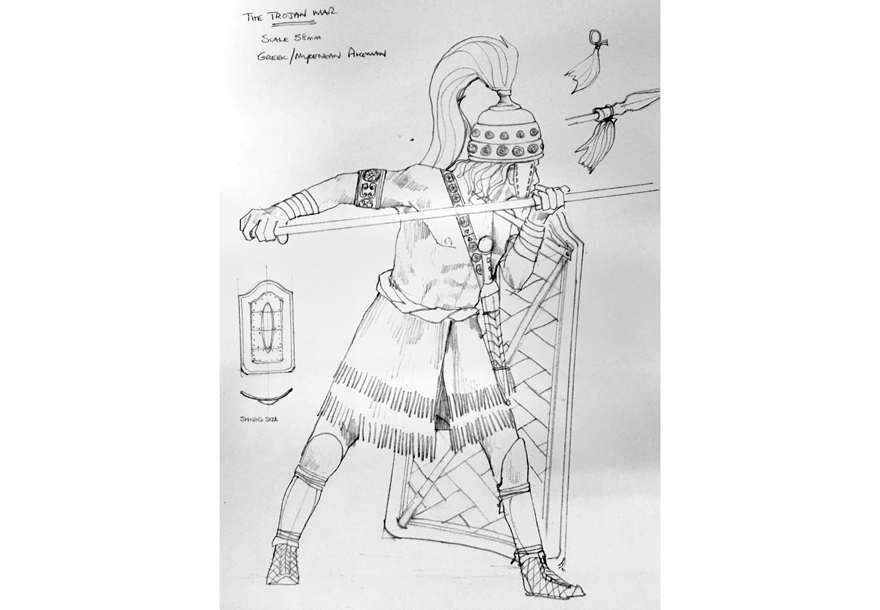
Sketch by John Jenkins of a Greek pikeman with very minimalist protection.
It was also a challenge how to depict the differences between the Greeks and the Trojans. I have tried to use colour in the clothing, with the Trojans painted in softer pastel colours, hopefully suggesting a richer society, compared to the Greeks where I chose a simpler red and black palette.
TSC- The Trojan War is linked with a lot of interventions from the gods and goddesses. Can we expect to eventually see those in their toy soldier form?
JJ- This was something else I had to consider, but as in the recent movie, the telling of the story of the Trojan War, can be told without the references to the gods. At this time I have no plans to produce any figures to represent these.
TSC- Helen of Troy is one of the main characters in this conflict, but is not a relevant figure when it comes to battles. This was also the case with La Malinche but you produced a figure of her. Will you make an exception for this femme fatale and make a toy soldier for her too?
JJ- There will of course be a Helen figure. The face that “launched a thousand ships”, or if sculpted by myself, a face that “could sink a thousand ships”!
It's always a challenge how to depict such beauty. My inclination is to give the figure a veil and suggest the beauty, rather than depict it. People's imagination is greater than reality.
TSC- Should we start building our own wooden horses to go with this collection or should we wait a bit until you see how the rest of the collection sells?
JJ- At this point I have not started work on a wooden horse. There is a part of me that will only produce the horse as the final piece that will complete the series.
And now, the Odysseus figure review!
Now that we know where this collection is going, it’s time to have a quick look at the new release of this month: Odysseus himself! As we saw from the previous interview, this figure is largely based on the work of Connolly. So it's no surprise that the figure looks like 3D version of the book! However, we can see some minimal differences such as the shaved beard and the crest on the helmet. So some artistic liberty was taken.
Odysseus is depicted here in a fighting pose, taking cover behind his shield and standing ready to strike with his sword. He also holds an extra spear in his left hand. This body pose makes him compatible for fighting in formation with other soldiers or to duel with another heroe. What is interesting is the palette used here. It’s a mix of bronze, leather, ocre and mostly natural fibers. This mix of those materials brings us straight to the bronze age.
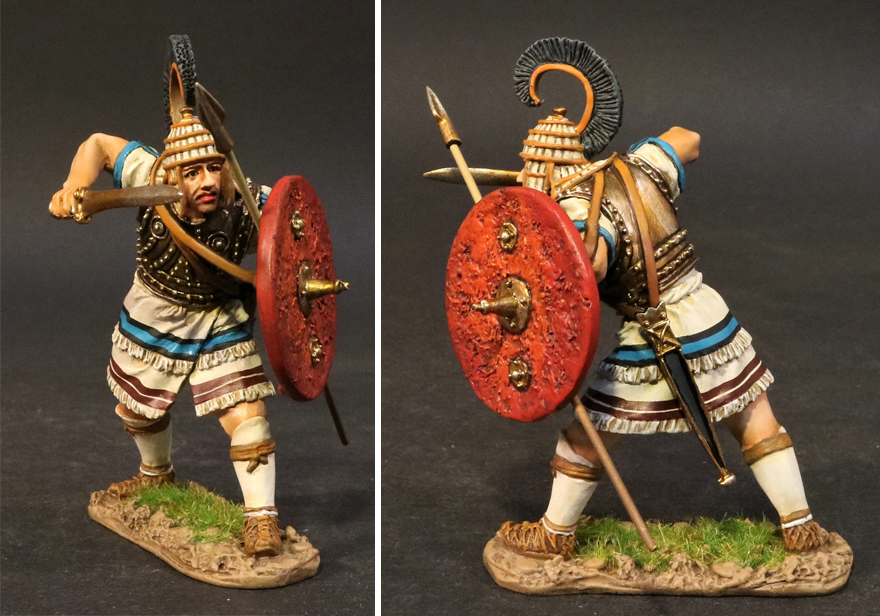
Designing this figure by basing it on the work of Connolly was a very good decision. It’s not often that we can get such an accurate depiction of the Bronze Age. Most of the time, when it comes to representing the Trojan War, we do it by using references from the time it was written by Homer. So it’s depicted in a more modern way than it should. This can be seen in many movies and even in some figures! Such was the case with the now retired Odysseus by King and Country.
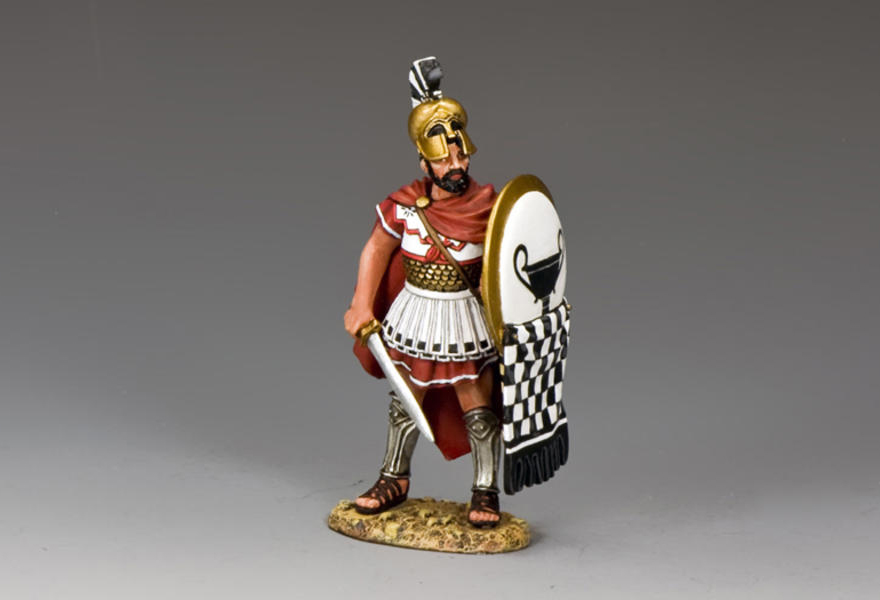
The retired AG033 - Odysseus by King and Country.
Perfect to go with the rest of their collection, but not so representative of a true bronze age.
To conclude, we can already see that this collection is promising. If you like the illustrations of Peter Connolly and his work as an historian/archeologist, those are pieces to not miss! John Jenkins is giving us a wonderful toy soldier adaptation of Connolly’s legacy. As for the future, walls for the Trojan War were also announced recently in addition to all the pieces required to equip the various factions from this conflict. We will even have a figure of Helen of Troy; the femme fatale at the origin of this conflict and this epic collection! I now leave you with a last sketch from John Jenkins, this time depicting a Trojan archer. But first, I would like to thank John Jenkins for taking the time to answer all those questions and send a few sketches. For us, the collectors, this is always sweet to get an insight of how our toys were created.
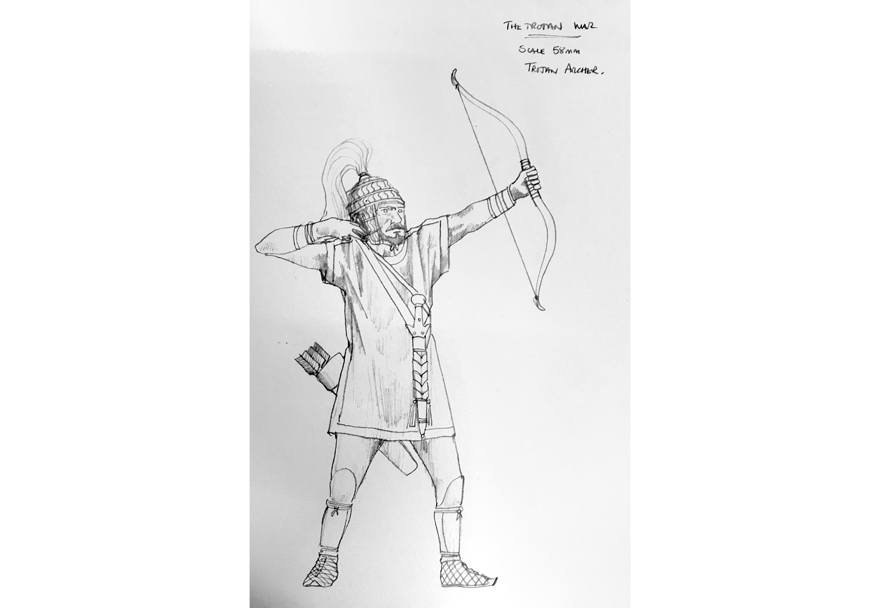

 Français
Français
